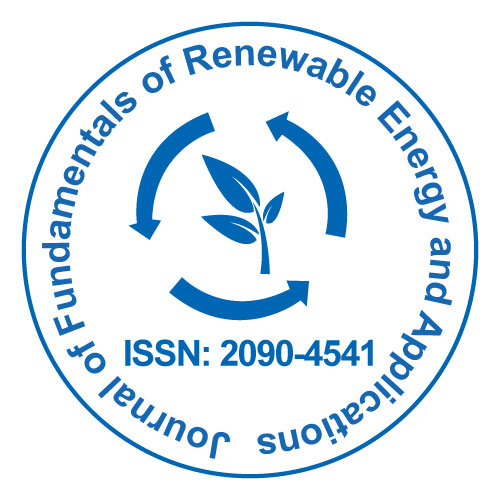
Journal of Fundamentals of Renewable Energy and Applications
Open Access
ISSN: 2090-4541
+44 1300 500008

ISSN: 2090-4541
+44 1300 500008
Commentary - (2023)Volume 13, Issue 3
Over the last few centuries, the availability of energy has changed the path of humanity. Not only have new energy sources been unlocked-first fossil fuels, then nuclear, hydropower, and now other renewable technologies-but also the quantity we can create and consume. This article concentrates on the amount of energy we utilize, including total energy and electricity consumption, how countries compare per person, and how energy consumption changes over time.
Our pages on the energy mix and electricity mix go into greater depth about the sources of this energy. Many different units are used in the energy realm, including joules, exajoules, million tonnes of oil equivalents, barrel equivalents, British thermal units, and terawatt hours, to name a few. This can be perplexing, making comparisons challenging. As a result, at our world in statistics, we strive for consistency by converting all energy statistics to watt hours. This is done to compare energy statistics from various metrics and sources.
Since the industrial revolution, the energy infrastructure has changed dramatically. The interactive chart above depicts the transformation of the world energy source. It plots worldwide energy consumption since 1800. It is based on Vaclav Smil's historical estimates of primary energy usage, as well as updated numbers from BP's statistical review of world energy.
It should be noted that this data shows primary energy consumption using the "substitution method." In contrast to the 'direct method,' the substitution method' tries to correct for inefficiencies (energy wasted as heat during combustion) in fossil fuel and biomass conversion. This is accomplished by converting nuclear and contemporary renewable technologies to their "primary input equivalents" if the same amount of energy were generated using fossil fuels. Here, we examine in depth at these two methodologies, how they differ, and what impact this has on energy statistics. The same data is also displayed in its 'direct primary equivalents' in the related chart below.
Energy demand is increasing in many countries around the globe as people become wealthier and populations grow. If this increased demand is not offset by other advances in energy efficiency, our global energy usage will continue to rise year after year. Growing energy usage complicates the transition of our energy systems away from fossil fuels and towards low carbon sources of energy: New low carbon energy must satisfy this additional demand while also attempting to displace existing fossil fuels in the energy mix.
This interactive graph depicts how global energy usage has changed from year to year. The shift is expressed as a percentage of previous year consumption. For more than a half century, global energy consumption has increased virtually every year. The exceptions were in the early 1980's and after the financial crisis in 2009. Global energy usage continues to rise, but at a slower pace, averaging around 1% to 2% per year.
The amount of energy do countries consume all over the globe use?
This interactive graph depicts primary energy consumption by nation. It is the entire amount of energy consumed, including electricity, transportation, and heating. Later in this article, we will look at electricity usage separately. Again, this is predicated on primary energy via 'the substitution method,' which means that nuclear and renewable energy technologies were converted into their 'primary input equivalents' if they had the same levels of inefficiency as fossil fuel conversion. We converted primary energy into terawatt hours to be consistent with the rest of the energy data we show. (rather than million tonnes of oil equivalents, or alternative energy units).
Citation: Rogris J (2023) Energy Consumption and its Primary Source of Consuming the Renewable Energy. J Fundam Renewable Energy App. 13:319.
Received: 06-Apr-2023, Manuscript No. JFRA-23-23328; Editor assigned: 10-Apr-2023, Pre QC No. JFRA-23-23328 (PQ); Reviewed: 24-Apr-2023, QC No. JFRA-23-23328; Revised: 13-Jun-2023, Manuscript No. JFRA-23-23328 ( R); Published: 20-Jun-2023 , DOI: 10.35248/2090-4541.23.13.319
Copyright: © 2023 Rogris J. This is an open-access article distributed under the terms of the Creative Commons Attribution License, which permits unrestricted use, distribution, and reproduction in any medium, provided the original author and source are credited.